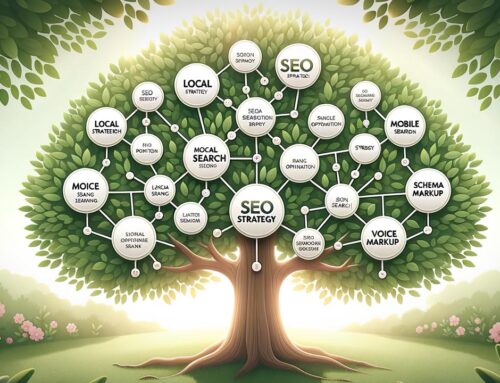The advent of the digital era has forever changed the way we find and consume information. Search engines, like Google, have become the go-to resources for quickly finding relevant, accurate information. Google’s mission to “organize the world’s information and make it universally accessible and useful” has brought about a number of innovations to improve the search experience. One such innovation is the ‘Featured Snippet’.
We will delve into the world of Featured Snippets. We will discuss what they are, why they are important, how they work, and how to optimize your content to appear in these prime search results. By the end of this article, you will have a clear understanding of the benefits of featured snippets and will be equipped with actionable strategies to leverage them for your digital marketing initiatives.
Let’s get started.
An In-Depth Overview of Understanding Google’s Featured Snippets
Table of Contents
- What are Featured Snippets?
- Types of Featured Snippets
- Why are Featured Snippets Important?
- How Do Featured Snippets Work?
- How to Optimize for Featured Snippets
- Frequently Asked Questions
- Final Thoughts
- Sources
What are Featured Snippets?
Featured Snippets, also known as “answer boxes,” are search results featured on Google Search Engine Results Pages (SERPs) that directly answer a user’s query. Introduced by Google in 2014, the main objective of featured snippets is to provide users with a straightforward answer to their questions without requiring them to click through to a specific webpage.
For example, if you ask Google “what is the capital of France?”, the featured snippet will present you with a brief answer, “Paris,” without requiring you to click on any of the search results.
These snippets are automatically pulled from web pages that Google’s algorithm determines to be the most relevant to the user’s search query. They are displayed in what’s commonly referred to as “position zero,” which is a spot above the traditional organic search results.
The content within a featured snippet box usually includes the extracted answer, the page title, and the URL of the page. In many cases, Google also includes an image from the webpage in the snippet.
There are a few noteworthy points about featured snippets:
- They do not always come from the top-ranking page on the SERP; they can be extracted from any page that Google deems has the best answer to the query.
- They are dynamic, which means they can change over time as Google’s algorithm finds “better” answers or as the webpage’s content changes.
- Even though the featured snippet answer is shown directly on the SERP, it does not mean that users won’t click through. In fact, many studies have shown that being featured in the snippet can significantly increase click-through rates (CTR).
Featured snippets have become a central part of Google’s strategy to make information easily accessible, and understanding how they work is crucial for anyone looking to improve their website’s visibility on search engines.
Types of Featured Snippets
While all featured snippets aim to directly answer a user’s query, they come in various formats to best suit the type of information being conveyed. The three primary types of featured snippets are paragraph snippets, list snippets, and table snippets.
1. Paragraph Snippets:
Paragraph snippets are the most common type of featured snippets. As the name suggests, they provide the answer in a paragraph format, typically up to 50-60 words long. These snippets are often displayed in response to questions like “What is…?”, “Who is…?”, and “Why is…?”.
Example: If you search for “What is the greenhouse effect?”, a paragraph snippet will provide a concise explanation of the greenhouse effect.
2. List Snippets:
List snippets come in two types: bulleted and numbered. These snippets are typically shown in response to queries that require a list of items or a sequence of steps.
- Bulleted Lists: These are used for non-sequential lists or collections of items. They typically appear for queries like “best movies of 2020” or “healthy foods for breakfast”.
- Numbered Lists: These are used for sequential lists, such as recipes or how-to guides. For instance, if you search for “how to bake a cake”, a numbered list snippet will provide step-by-step instructions.
3. Table Snippets:
Table snippets are used to organize and present data in a table format. They are often used for comparison-based queries or queries that require organized data representation. For example, if you search “Olympics medal tally”, you’ll likely see a table snippet showing the countries and their respective medal counts.
Note that Google doesn’t always strictly follow the original table structure from the webpage; it might extract the relevant data and organize it in its own way.
By understanding these types of featured snippets and the kinds of queries they respond to, you can better optimize your content to align with Google’s featured snippet format.
Why are Featured Snippets Important?
Featured snippets are crucial for several reasons, significantly impacting both the user experience and the visibility and traffic of your website.
1. Increased Visibility:
The prime positioning of featured snippets on the SERPs—often referred to as “position zero”—means they’re the first thing a user sees after making a search query. This offers a significant visibility advantage, helping your brand or website gain more exposure. According to a 2017 study by Ahrefs, 8.6% of clicks go to the featured snippet when one is present, indicating the potential for increased traffic.
2. Enhanced Credibility and Trust:
When your content is chosen for a featured snippet, it’s a signal from Google that your webpage accurately and effectively answers a user’s question. This can enhance your brand’s credibility and build trust with users.
3. Voice Search Optimization:
As voice search becomes increasingly popular with the rise of smart speakers and digital assistants, featured snippets are playing a vital role. When a voice search is conducted, Google Assistant often reads out the information from the featured snippet. Consequently, if your content appears in the featured snippet, it could significantly increase your visibility in voice search results.
4. Increased Click-Through Rates (CTR):
Featured snippets can boost your webpage’s CTR. Even though users receive the answer on the SERP, many will click through to the source page for additional information, especially when the answer is interesting and valuable. A study by HubSpot found that content with a featured snippet gets a 2X higher click-through rate.
5. Competitive Advantage:
Lastly, obtaining a featured snippet can give you a competitive advantage. Even if your competitor has the top organic search result, your webpage can still appear above it in the featured snippet, potentially drawing more traffic to your site.
Given these benefits, it’s clear why marketers and SEO professionals place a high priority on optimizing their content to win featured snippets.
How Do Featured Snippets Work?
The mechanics of featured snippets are rooted in Google’s advanced search algorithms, which aim to provide the best possible answer to a user’s query. While Google has not publicly disclosed the exact algorithm used for generating featured snippets, the broad understanding of how they work is based on observation and experimentation.
1. Identifying the Query:
Google’s algorithm first identifies the nature of a search query. It pays attention to whether it’s a question (what, who, how, etc.) or whether it implies a need for a specific type of information (e.g., a comparison, a list, a definition, etc.).
2. Searching for the Answer:
Once Google understands the query, it searches its index to find pages that contain a likely answer. It’s important to note that the pages do not necessarily have to be in the top organic positions to be considered for the featured snippet.
3. Extracting the Snippet:
Google then extracts a portion of content from the page it thinks best answers the query. This is usually a succinct passage that directly answers the question or query. The exact formatting of the snippet (paragraph, list, or table) depends on both the nature of the query and the structure of the information on the webpage.
4. Displaying the Snippet:
The extracted snippet is then displayed at the top of the SERP in the “position zero”, accompanied by the page’s title and URL. In many cases, an image from the page is also included.
5. Reviewing and Updating:
Google continually reviews and updates its featured snippets. If the content on the original page changes, or Google finds a “better” answer from another page, the featured snippet can change accordingly.
It’s also important to note that Google uses machine learning to improve the accuracy and relevance of its featured snippets over time. This means the more data Google collects about the accuracy of its snippets and how users interact with them, the better it gets at choosing and displaying the most helpful ones.
How to Optimize for Featured Snippets
Optimizing your content for featured snippets can significantly increase your website’s visibility, credibility, and organic traffic. Here are some strategies that can help your content appear in featured snippets:
1. Understand and Answer User Queries:
The first step in optimizing for featured snippets is to understand the questions and queries your target audience is asking. You can use keyword research tools like SEMrush, Ahrefs, or AnswerThePublic to discover these questions. Once you’ve identified the queries, ensure your content provides clear, concise, and direct answers.
2. Provide High-Quality, Authoritative Content:
Google prioritizes content that’s authoritative and reliable, so focus on producing high-quality content that demonstrates your expertise in your field. Also, ensure your website as a whole is authoritative, with high-quality backlinks and positive user engagement.
3. Use Appropriate Formatting:
Format your content in a way that aligns with the type of featured snippet you’re targeting. For instance, use bullet points or numbered lists for list snippets, tables for table snippets, and concise paragraphs for paragraph snippets. Structuring your content with clear headings (H1, H2, etc.) can also help Google understand and extract the relevant information.
4. Optimize for Long-Tail Keywords:
Featured snippets often appear for long-tail keyword queries. These are longer, more specific search terms that typically come in the form of questions. Include these long-tail keywords in your content to increase your chances of appearing in the featured snippet.
5. Use Schema Markup:
Schema markup is a type of microdata that helps search engines better understand your content. Although it’s not confirmed that schema directly influences featured snippets, it can certainly help Google understand the context of your content.
6. Improve Your Page’s SEO:
While a top-ranking isn’t necessary to get a featured snippet, it does help. Therefore, implementing solid SEO practices—like optimizing meta tags, using relevant keywords, and building quality backlinks—can improve your chances of getting a featured snippet.
Remember, getting featured snippets can take time and requires continuous effort and optimization. Keep track of your progress and make necessary adjustments to improve your chances of success.
Frequently Asked Questions
Final Thoughts
Featured snippets have revolutionized the way users interact with search engines. They provide quick, concise answers right on the SERP, leading to an improved user experience. Not only that, but they also offer a golden opportunity for marketers to drive more organic traffic to their site and enhance their brand’s visibility. Understanding the mechanics of featured snippets and implementing optimization strategies is critical to staying ahead in the ever-evolving digital landscape.
Sources
- Ahrefs Study on Featured Snippets, 2020
- Google Search Central. “Featured Snippets in Search.”
- Neil Patel. “How to Optimize for Google’s Featured Snippets.”
- Search Engine Land. “The Importance of Featured Snippets”
- Moz. “A Guide to Optimizing for Google Featured Snippets.”











Leave A Comment